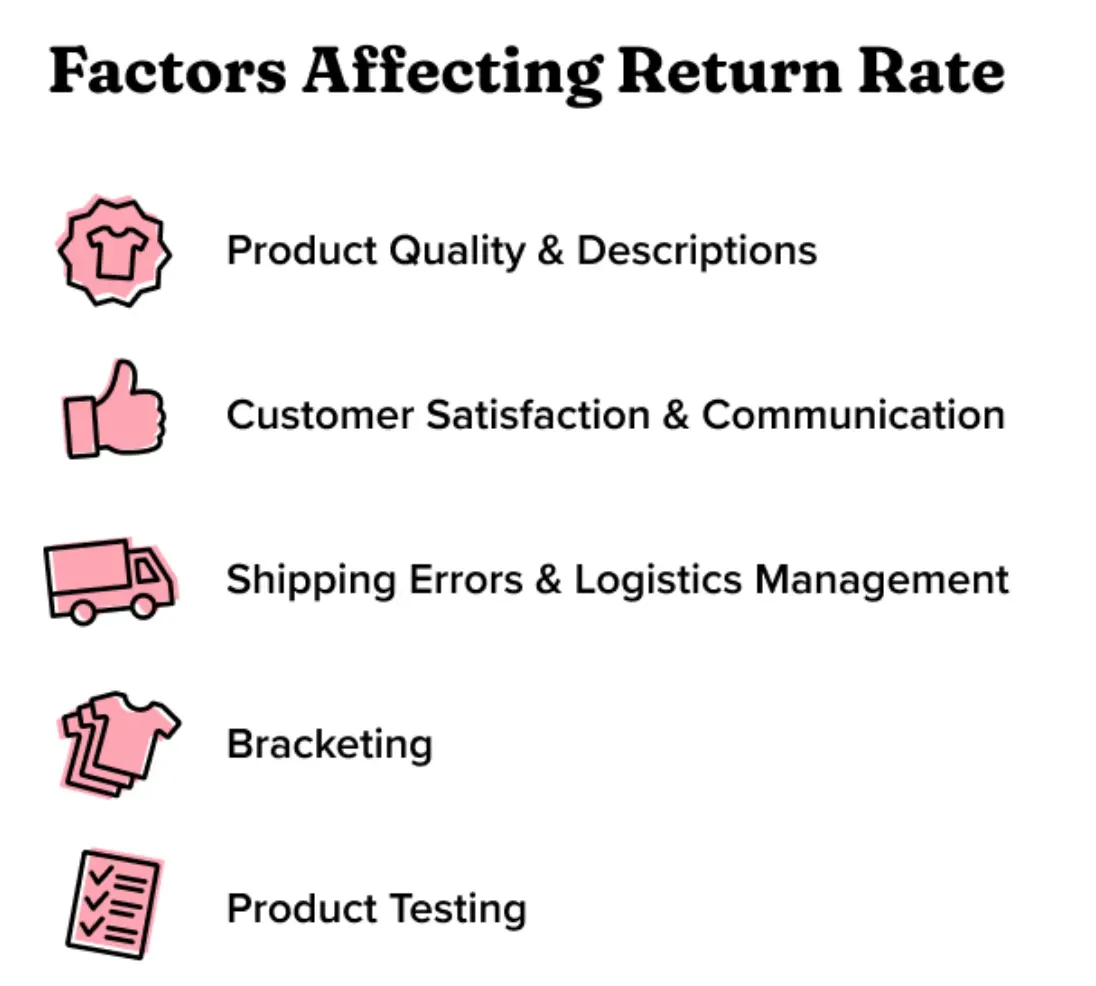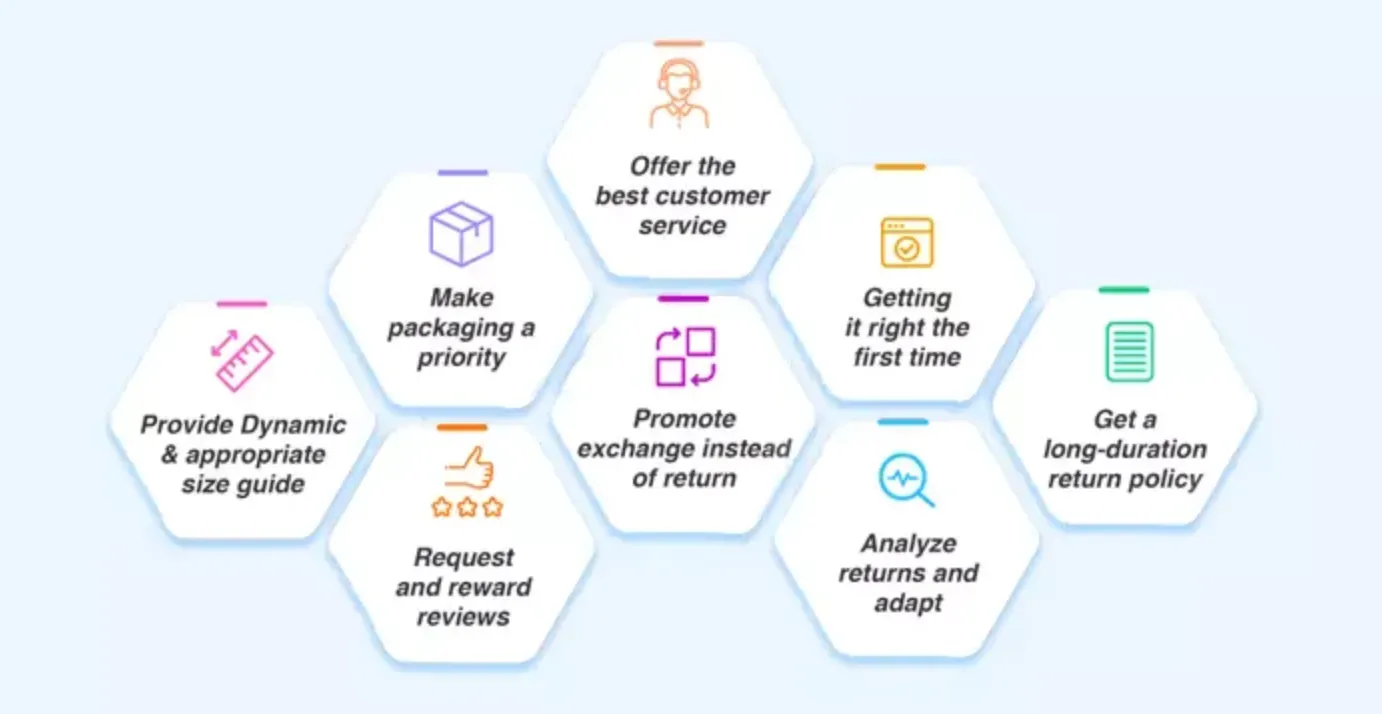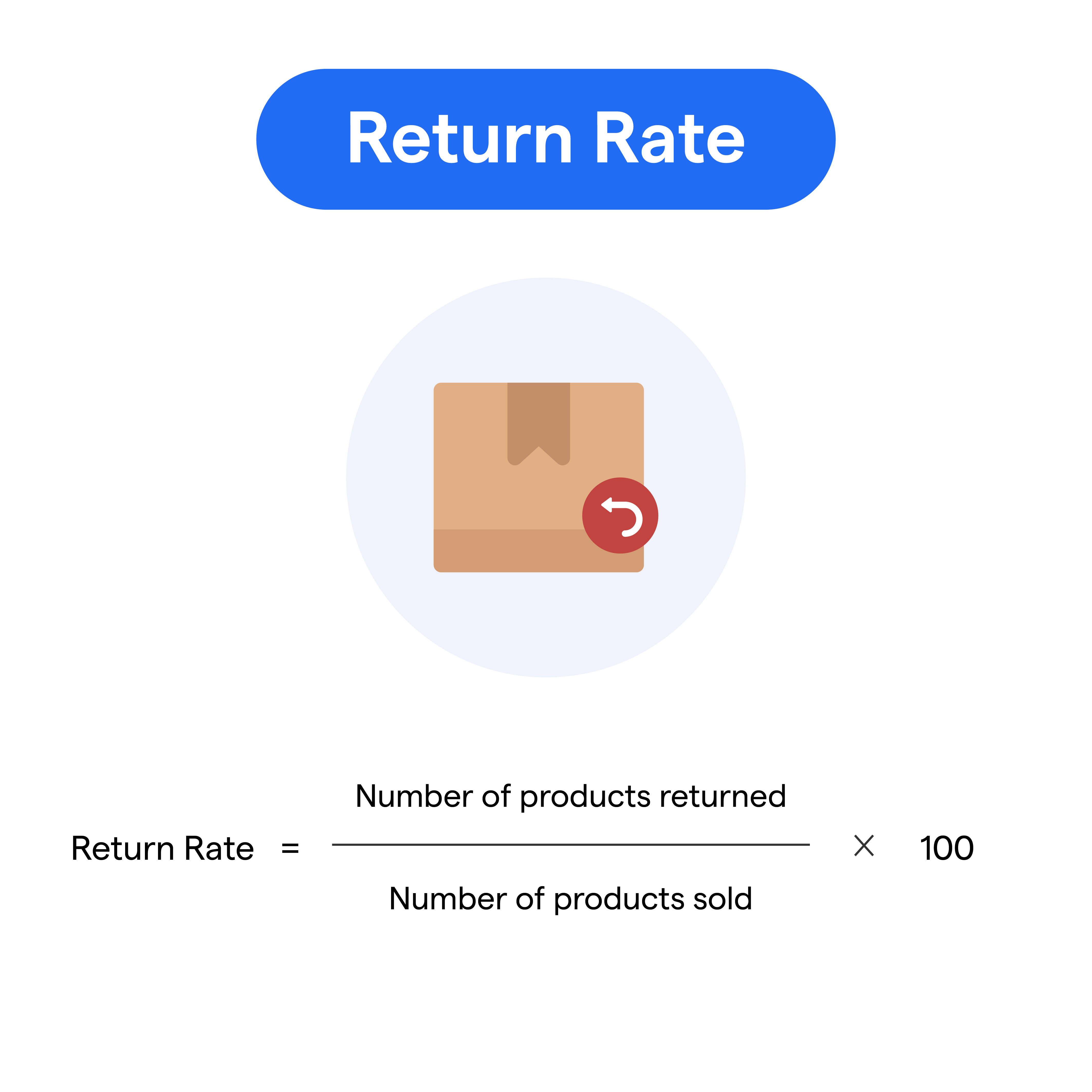What is Return Rate?
Return Rate is a business metric that gauges the percentage of purchased products that customers return to a company. It is a critical indicator that helps businesses understand customer satisfaction levels and product quality.
Return Rate in Different Industries
The significance of return rate varies per industry. For instance, it's a critical metric for e-commerce and retail industries where returns directly impact profit margins and customer experience. Conversely, in software or service industries, return rate takes a metaphorical sense, referring to the cancellation or discontinuation of services.
Calculating the Return Rate
The return rate is usually calculated as the number of units returned divided by the number of units sold, and it is expressed as a percentage. However, this calculation might slightly differ based on the specific definitions adopted by different companies.
Why Return Rate Matters?
Understanding return rate allows businesses to zone in on product issues and customer dissatisfaction, thereby identifying opportunities for improvement. A high return rate generally indicates a problem with the product or mismatched customer expectations.
Analyzing Return Rate
Next up, let's unravel how businesses can analyze return rates to ensure effective decision-making processes.

Unveiling Product Issues
Products with higher return rates can help businesses spot common defects or problems. These analytics can be used to repair design flaws and improve overall product quality.
Understanding Customer Behavior
Analyzing return rates can reveal valuable insights about customer preferences and behavior. Businesses can identify which products are falling short of customer expectations and make strategic amendments.
Enhancing Customer Experience
The return process is a crucial part of the customer journey. By analyzing return rates, businesses can streamline this process and enhance satisfaction – ultimately encouraging customer retention.
Return Rate and Financial Implications
A high return rate can affect several financial aspects, including revenue, shipping costs, and even stock handling. Recognizing this impact can drive strategic decision-making to offset these financial ramifications.
Impact of High Return Rate
It's important to understand that high return rates can have adverse effects. Let's portray the key impacts.
Financial Strain
Each product returned implies direct losses – the initial sale is nullified, plus there are added costs for shipping, restocking, and possibly refurbishing. Therefore, high return rates could lead to significant financial strain.
Damage to Brand Reputation
Frequent returns hint at dissatisfied customers. This dissatisfaction could spread through word of mouth or negative reviews, potentially damaging your brand reputation.
Inventory Management Issues
High volume returns can lead to overstocking and inventory management issues that may further strain warehouse resources and escalate overhead costs.
Environmental Impact
In addition to the business aspect, frequent product returns also translate into environmental concerns. The return process involves transportation and packaging that collectively contribute to carbon emissions and environmental strain.
Minimizing the Return Rate
The key to success in business often lies in the prevention of problems. Minimizing return rates serves as a significant step in this direction.

Improving Product Quality
The simplest yet effective way to reduce returns is by ensuring superior product quality. Businesses need to continuously assess and assure quality to minimize dissatisfaction-induced returns.
Enhancing Product Descriptions
A comprehensive and honest product description helps match customer expectations. Clear product images, size guides, and accurate descriptions can effectively mitigate returns due to misaligned expectations.
Streamlining Purchasing Process
An easy and interactive purchasing process can help customers make informed decisions. Features like virtual try-ons, customer reviews, and detailed specifications can significantly reduce purchase errors.
Refining Customer Targeting
Understanding customer preferences and improving targeting can ensure that the right products are being marketed to the right customers, thereby reducing chances of purchase dissatisfaction and eventual returns.
Measuring the Success of Return Rate Reduction Efforts
While businesses strive to reduce return rates, it’s equally essential to gauge the success of these efforts.
Track Return Rate Over Time
Measuring the return rate over a period of time can show the impact of the efforts made toward reducing returns. A progressive decrease in the return rate can indicate the success of these initiatives.
Measure Customer Satisfaction
Surveying your customers about their purchasing experience and their reasons for not returning products can help evaluate satisfaction levels. An increase in customer satisfaction levels usually corresponds with a decrease in returns.
Evaluate Financial Health
A direct way to measure the success of return reduction efforts is by examining its impact on financial health. Declining return costs, increasing revenue, and growing profit margins can all suggest a positive outcome from reduced return rates.
Observe Brand Perception
Monitoring customer reviews and public opinion about your business can also signal the influence of return rate reductions. Positive changes in brand perception, reduction in negative reviews, and increases in product ratings often coincide with successful return minimization.
Leveraging Technology to Reduce Return Rates
In the modern retail landscape, technology plays a pivotal role in addressing the issue of return rates.
Return Management Systems
These systems can simplify and streamline the return process for both customers and businesses. They help track returns and provide valuable analytics to pinpoint problem areas.
AI and Machine Learning
AI-powered solutions can predict return propensity based on customer behavior, purchase history, and product details. This can help in strategizing return reduction efforts and personalizing shopping experiences.
Augmented Reality (AR)
AR can provide customers with a virtual 'try before you buy' experience. This interactive technology can minimize purchase errors and misaligned expectations, thereby reducing return rates.
IVR and Chatbots
Interactive Voice Response and chatbots can handle customer queries effectively and provide instant problem-solving, potentially reducing the need for product returns.
Best Practices For Managing Return Rate
Finally, let’s look at some best practices that can shape a successful strategy for managing return rates.

Transparent Return Policy
A clear, fair, and easy-to-understand return policy can enhance customer trust and loyalty. It can discourage 'serial returners' while ensuring a fair deal for genuine customers.
Providing Stellar Customer Support
Excellent customer support can facilitate issue resolution at an early stage, potentially avoiding numerous returns. It's an opportunity for a business to change a negative experience into a positive one.
Learning from Returns
Each return holds valuable lessons. Analyzing them can provide insights that can be used for product improvement, providing a better customer experience, and making proactive business decisions.
Regularly Reviewing Return Data
Frequent review of return data helps keep a constant check on your return rates. This allows businesses to quickly identify trends, catch issues, and nip potential problems in the bud.
In conclusion, efficiently managing return rates is essential for keeping your customers happy, your reputation clean, and your bottom line healthy. It's a tricky task, but its mastery can deliver immensely rewarding results.
Frequently Asked Questions (FAQs)
Why is the return rate for my eCommerce store high?
There could be various reasons contributing to a high return rate, such as sizing issues, product misrepresentation, poor product quality, shipping problems, or customer dissatisfaction.
How can I reduce the return rate for my products?
To reduce return rates, ensure accurate product descriptions, provide detailed size charts, improve product quality, optimize shipping processes, and focus on customer satisfaction through excellent service and support.
What can I do to address sizing and fit issues?
Offer clear and accurate size charts, provide detailed measurements, and consider including customer reviews to help shoppers make informed decisions about sizing and fit.
What strategies can I implement to decrease returns due to product misrepresentation?
Ensure that product descriptions and images accurately represent the item, mention any potential color/material variations, and offer a hassle-free return process for customers dissatisfied with the product.
How can I improve customer satisfaction and reduce return rates?
Focus on providing excellent customer service, promptly addressing customer inquiries and complaints, offering a user-friendly return policy, and soliciting customer feedback to identify areas for improvement.

